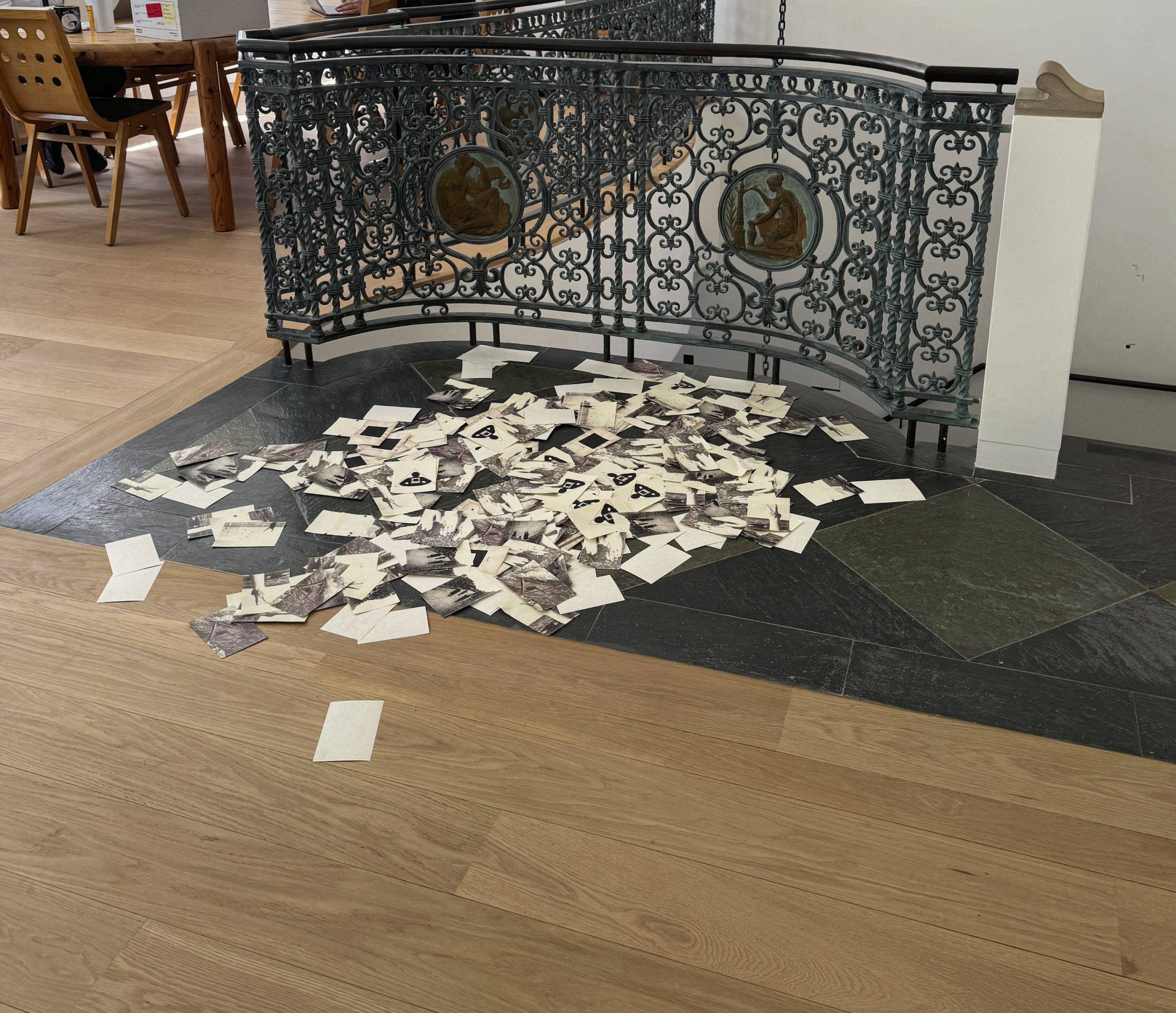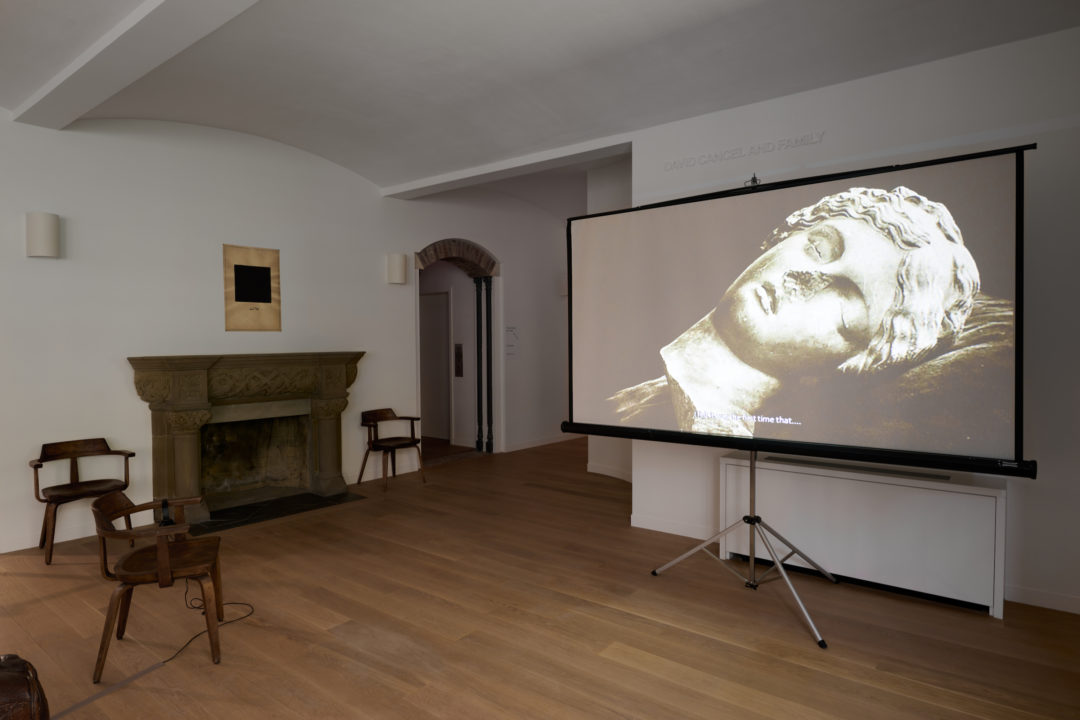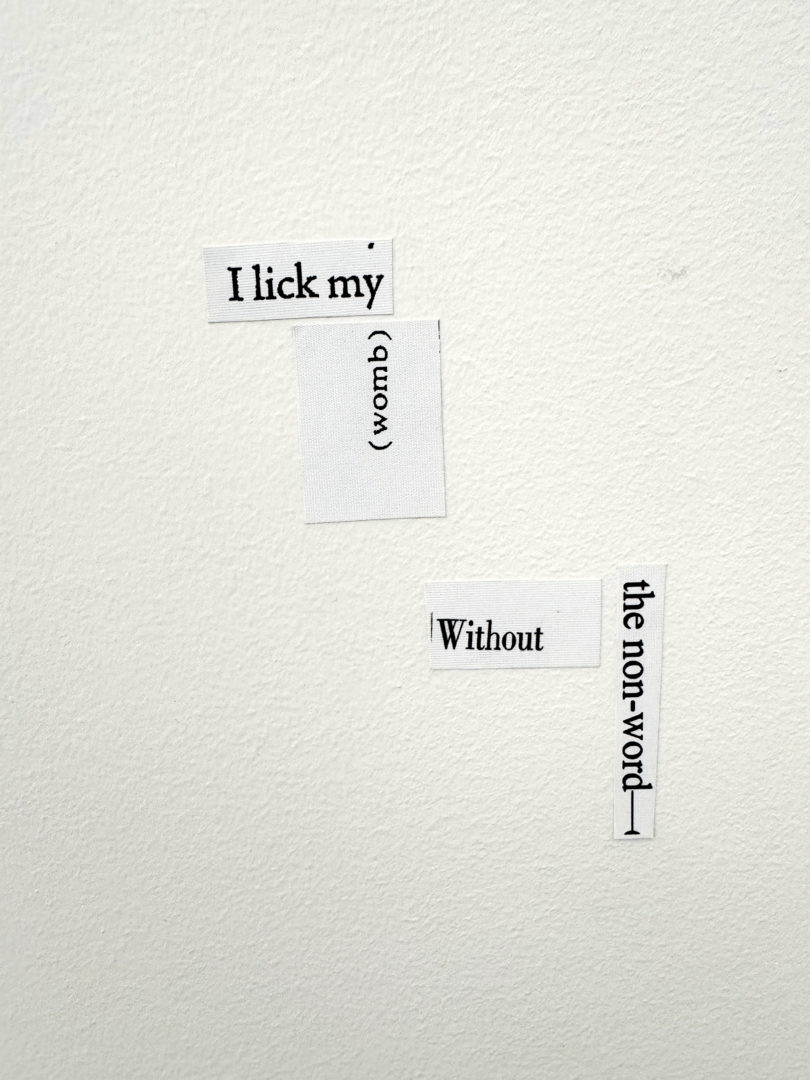Not Everything is Given, Whitney ISP, New York

Not Everything Is Given, Whitney ISP Curatorial Exhibition
Not Everything Is Given is the collaboration of four curators who met in the Whitney Independent Study Program (ISP) in 2024: Ella den Elzen (USA/Canada), Gervais Marsh (Jamaica), Carlota Ortiz Monasterio (Mexico), and Alper Turan (Turkey). Together they have assembled a group of artists whose aim is to decipher the obscure and illegible conditions of our world by estranging the expectations to which overdetermined categories usually relegate our understanding. Using withholding—not giving up meanings easily—as an artistic apparatus, these artists allow latent ideas to emerge and manifest, complicating normalizing categories and histories that we might have thought were self-evident and stable.
The exhibition takes place in the context of a reorganization of the ISP: this year marks the close of the fifty-four-year tenure of founding director Ron Clark and the appointment of incoming director and artist/activist Gregg Bordowitz, himself a Whitney ISP participant from 1985 to 1986. The exhibition is also the first to be staged in the newly renovated home and studio of Roy Lichtenstein, at 741-745 Washington Street—now the ISP’s permanent space after a half-century of nomadic existence.

Upon entering the exhibition, we first engage with a work by Kameelah Janan Rasheed (USA), they feed on the altitude of our afterlife (2024). Here a written score erupts out of a rectangular diagram, scientific in appearance, printed on vinyl and filled with white arrows, circles, and text. Sited on the first landing of the staircase, it suggests a volcano spewing lava, ash, and cinder upward to be deposited on the walls as a graphic score, snaking up the stairs to the second floor. Cut-and-paste phrases compose a blank verse: enjambed phrases, a kind of staircase strophe, consist of, from top to bottom, “I lick my” (horizontal) “womb” (vertical), “Without” (horizontal) “the non-world” (vertical). Architecture is transformed into a book of verse and recalls the methodology of ostranenie, or defamiliarization as formulated by the Russian literary philosopher Viktor Shklovsky in his essay “On the Theory of Prose” (1925): for Janan Rasheed, the methodology of scoring the wall offers an estrangement and revitalization that open up new fugitive ways to trace and relearn meaning.
Reaching the second floor, we are met with an installation of small, tinted photographs scattered on the floor in a quasi-circular arrangement with diffuse borders, delimited by the wrought-iron railing of the original residence. This work—Birding (2016), by the collective baçoy koop (Printing, duplication, and distribution cooperative, Turkey)—is the result of an act called “birding” in which political activists in Turkey in the 1970s would throw antigovernment pamphlets into the air amid a crowd to fall randomly on the ground. For this exhibition, one of the curators, working on behalf of baçoy koop, reenacted birding in this private sphere, leaving its aftershock on the floor.
In Sitting Through (2019), Diyar Mayil (Turkey) questions the idea of the home and its accompanying notions of comfort, caring, and hospitality. Originally part of a larger installation called Houseguest(2022), the work makes every day domestic objects queer and uncomfortable. In a world characterized by displacement, migration, and loss—the generalized condition of the unheimlich—that millions are experiencing is made concrete in the artists strangely crafted table. Its skin like, uneven tabletop is fabricated from silicone and has an underbelly of three unequal mounds of salt; its ceramic legs are of different lengths due to unequal firing. No longer somewhere to eat and share, the table becomes a place of angst and instability.
This condition is echoed in the distorted, blurred, and poorly lit array of “cruel images” that introduce the adjacently installed film Offing (2021), directed by Oraib Toukan (Palestine). Here, the devastation of the war in Gaza creates a state of perceptual and intellectual precarity. The film includes documentary footage, with a voice-over of Salman Nawati, (Palestine) recounting the effects of a bombardment on a family and their home, and its assault on the senses. The inescapable noise of bombs and drones is torture for adults and children alike. In a time when death is always present and random events rule the day, there is no solace for the ear or for the mind.

Niloufar Emamifar’s (Iran) Three Inches and a Half (2018) engages with the ISP space as its metric marker, occupying the two north corners of the exhibition footprint like oddly shaped bookends framing a queered space. In a move recalling Gordon Matta-Clark’s Fake Estates (1973–74), in which Matta-Clark bought tiny property subdivisions that had no legal owners, Emamifar made a silicone cast of the “slit” between a Palestinian-owned mechanics’ shop and a restaurant in Koreatown, Los Angeles. The casting of this imaginary border zone as a site-specific work and its later reenactment as a nonsited work in the gallery space is a comment on the earthworks or land art tradition. However, rather than addressing regimes of modernism, as sculptures in the expanded field did, Emamifar’s work is a social sculpture, commenting on the lived social and economic relations of a family in the Palestinian diaspora.
Joyce Joumaa’s (Lebanon/Canada) Hallab Bldg and Mafra’ Baladiye (both 2024) are repurposed readymades in which electrical breaker boxes have been upgraded into lightboxes, the former featuring an image of the interior of an apartment in Tripoli, Lebanon, the latter the hands of the artist’s aunt and grandmother preparing Sunday lunch in their home in Beirut. Set on a timer, these works light up, but not at the same time—each is illuminated only when the residents of these faraway apartments have electricity. Due to governmental mismanagement and economic hardship, electricity is rationed in Lebanon. The telemetric works in the gallery communicate the hardships of another type of domestic situation, far from the economic security enjoyed by visitors to the exhibition.
Other participating artists were Noor Abed (Palestine), Laakuluk Williamson Bathory (Canadian), Niloufar Emamifar (Iran), Naomi Rincón Gallardo (Mexico), Aziz Hazara (Afghanistan), Shala Miller,( United States) İz Öztat, (Turkey) Taqralik Partridge, (Canada) Cameron Rowland (United States), Ebun Sodipo (United Kingdom), Charisse Pearlina Weston (United States), Zişan (Turkey).
- Queered space
Head image :BAÇOY KOOP, Birding (2016), Reproduction de feuilles imprimées par ronéotypie / Reproduction of mimeograph printed fyers, variable dimension, Courtesy of the Artist
- From the issue: 109
- Share: ,
- By the same author: On the High Line,
Related articles
Streaming from our eyes
by Gabriela Anco
Don’t Take It Too Seriously
by Patrice Joly
Déborah Bron & Camille Sevez
by Gabriela Anco

